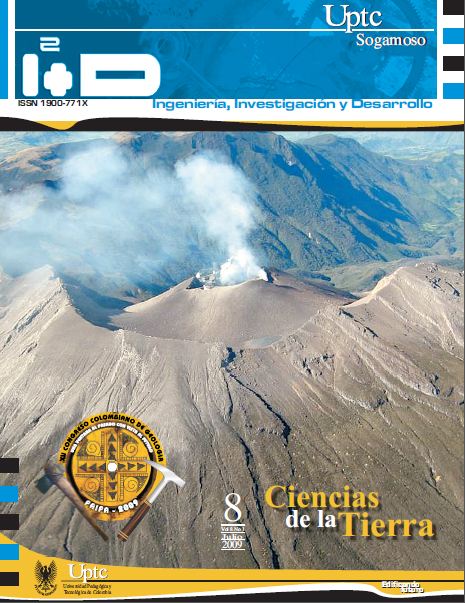The anthropization pollen and non pollen and non pollen palynomorphs indicators: an example

Abstract
High resolution pollen analysis of a peat bogs (Rascafría, Valle del Lozoya, Madrid) allowed to reconstruct the dynamic of the vegetation comunities of the last 2455 ± 60 BP, as well as the anthropic signals from the Prehistoric to the present time. A paleolandscape of pasture dedicated to transhumant and transterminant cattle activities define different levels of anthropic pressure. This study reveals the importance of the use of the pollen and non-pollen (NPP) proxies of anthopic activity in the determination of the palaeoecological conditions and human impact on the environment, allowing in this example, to characterize the livestock and the identification of the changes in the trophic status of the peatbog.
Keywords
anthropization, pollen, non pollen palynomorphs, Madrid, holocen
References
- Barbier, D.; Burnouf, J, Visset, L., (2001): Les diagrammes société/vegetation: on outil de dialogue interdiciplinaire pour la compréhension des interactions homme/milieu, Quaternaire, Vol. 12(1-2), pp. 103-108.
- Bauer, E. (1991): Los montes de España en la historia. Servicio de Publicaciones Agrarias,p.61.
- Behre, K.E., (1981):_ The interpretation of anthropogenic indicators in pollen diagrams, Pollen et Spores, Vol. 23, pp. 225-245.
- Behre, K.E., (1986): Anthropogenic indicators in pollen diagrams. A.A. Balkema, 232p.
- Behre, K.E., (988): The rôle of man in Europe vegetation history. Kluwer Academic Publications, pp. 633-672.
- Berglund, B.E., (1969): Vegetation and human influence in South Scandinavia during prehistoric time, Oikos Supplement, Vol. 12, pp. 9-28.
- Berglund, B.E., (2003): Human impact and climate changes – synchronous events and causal link, Quaternary International, Vol. 105, pp. 7-12.
- Bronk-Ramsey, C., (2000): OxCal, version 3.5. http://www.rlaha.ox.ac.uk/ orau/index.htm.
- Carrión, J.S.; Munuera, M.; Navarro, C.; Sáez.F.,(2000): Paleoclimas e historia de la vegetación cuaternaria en España a través del análisis polínico. Viejas falacias y nuevos paradigmas. Complutum, vol. 11, pp. 115-142.
- Diot, M.F., (1991): Le palynofacies en archéologie: interêt de son êtuede. Revue d’Archéometrie, Vol. 15, pp. 54-62.
- Domínguez Castro, f.; Santiesteban, J.I.; Mediavilla, R.; Dean, w.; López-Pamo, E.; gil, M.J.; ruiz Zapata, M.B.,(2006):Environmental and geochemical record of human-induced changes in Cstorage during the last millenium in a temperate wetland (Las Tablas de Daimiel National Park, central Spain). Tellus, Vol. 58, pp. 573-585.
- Fernández, F., (1999): La flora y la vegetación del Parque Natural de Peñalara y el Valle de El Paular (Madrid): implicaciones en la conservación de la biodiversidad, Consejería de Medio Ambiente , pp. 179-196.
- Galop, d., (1998): La forêt, l’homme et le troupeau dans les Pyrénées. 6000 ans d’historie de l’environnement ente Garonne et Méditerrsnée. FRAMESPA, 285 p.
- Galop, d.; López Sáez, J.A., (2002): Histoire agraire et paléoenvironnement: les apports de la palynologie et des microfossiles non-polliniques. Trabalhos de Antropologia e Emtologia, Vol. 42 (1-2), pp. 161-164.
- Galop, d.; Vaquer, J., (2004): Regards croisés sur les premiers indices de l’anthropisation en domaine pyrénéen, Environnement, Sociétiés et Archéologie, Vol. 7, pp. 179-194.
- Girad, M., (1973): Pollens et Paléoethnologie. Editions Cujas, pp. 317-332.
- Gómez, c., (2007): Actividad antrópica y vegetación en el Valle del Lozoya (Madrid) durante el holoceno reciente. Tesis doctoral, Universidad de Alcalá. Inédita, p. 449.
- Grimm, E.c., (1987): CONISS: a FORTRAN 77 program for stratigraphically constrained cluseter analysis by method of incremental sum of squares, Computers Geosciences, Vol. 13(1), pp. 3-35.
- Iversen, J., (1949): The influence of prehistoric man on vegetation. Danmarks Geologiske Undersogelse, Vol. 4(3-6), pp 5-22.
- Jalut, G., (1991): KLe pollen traducteur du paysage agraire. Editions Colin, pp. 345-368.
- López Sáez, J.A.; López García, P.;M Burjachs, F., (2003): Arqueopalinología. Síntesis crítica. Polen, Vol. 12, pp 5.35.
- López Sáez, J.A.; López Merino, L., (2007):Coprophilous fungi as source of information on anthropic activities during the prehistory in the Amblés valley (Ávila, Spain): the archaeopalynological record. Revista Española de Micropaleontología, Vol.38 (1-2), pp. 49-75.
- López Sáez, J.A.; Van Geel, B.; Martín Sánchez, M., (2000): Aplicación de los microfósiles no polínicos en palinologíaarqueológica. Actas 3° Congreso de Arqueología peninsular. Portugal, Septiembre de 1999.
- Mulder, Ch.; Schouten, a.; Hund-rinke, K.; Breure, A.,(2005): The use of nematodes in ecological soil classification and assessment concepts. Ecotoxicology and Environmental Safety, Vol. 62, pp. 278-289.
- Mulder, Ch.; Zwart, d.; Van Wijnen, H.; Shouten, A.; Breure A., (2003): Observational and simulated evidence of ecological shifts within the soil nematode community of agroecosystems under conventional and organic farming. Functional Ecology, Vol. 17, pp. 516-525.
- Richard, H., (1999): La palynology. Éditions Errance, pp. 9-42. Rivas Martínez , s., (2007). Mapa de series, geoseries y geopermaseries de vegetación de España. (memoria del mapa de vegetación potencial de España. Parte 1. Itinera Geobotanica, Vol. 17, pp. 1436.
- Turner, C., (1964): The anthropogenic factor in vegetational history. New Phytologist, Vol 3, pp. 73-89.
- Van Gell, B. (2001): Non-pollen palynomorphs Kluwer Academic Publishers, pp. 99-119.
Downloads
Download data is not yet available.